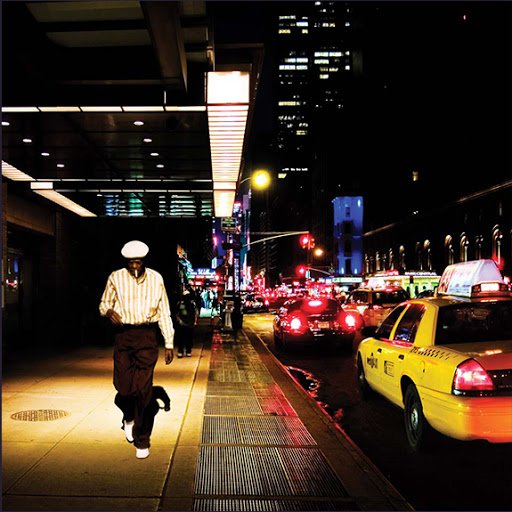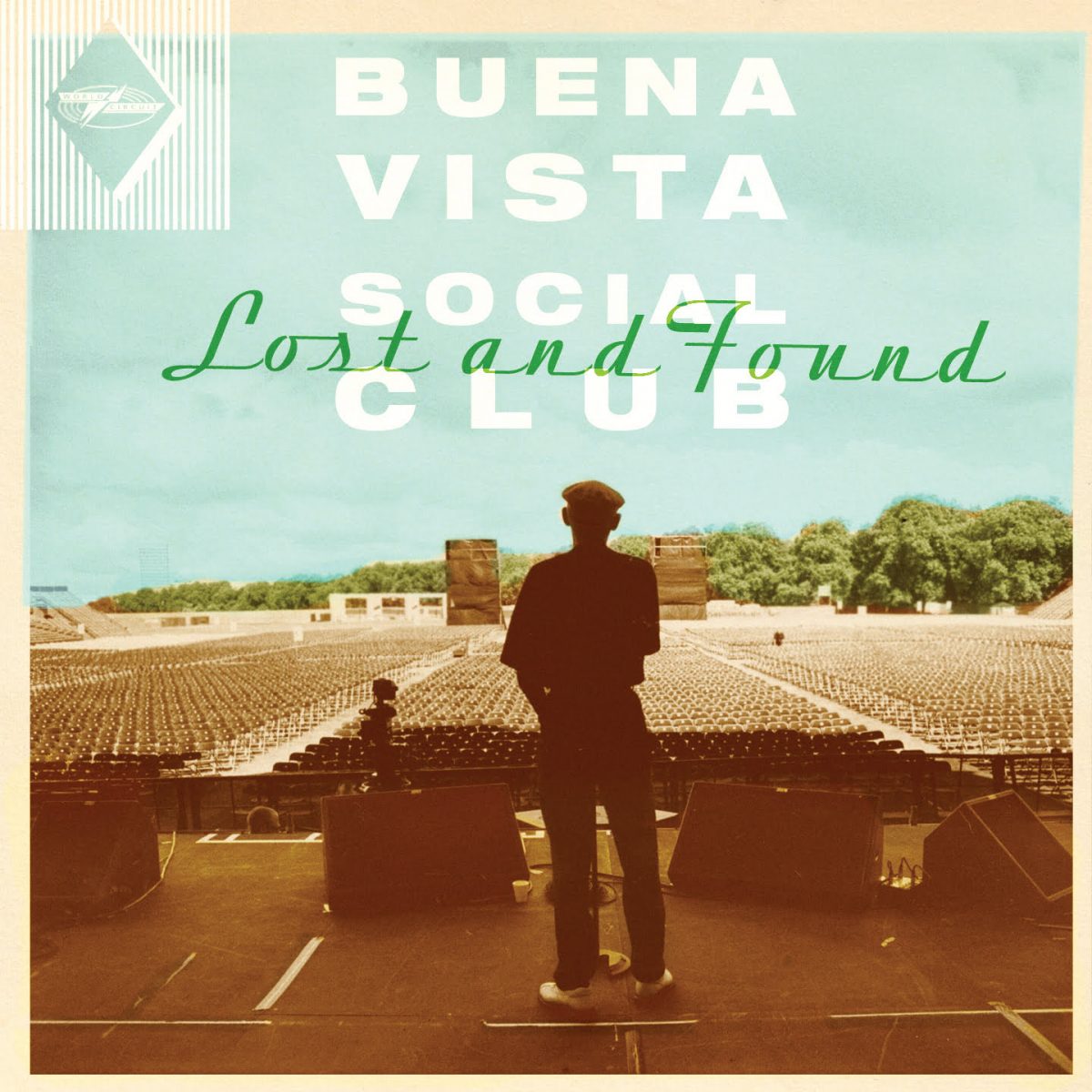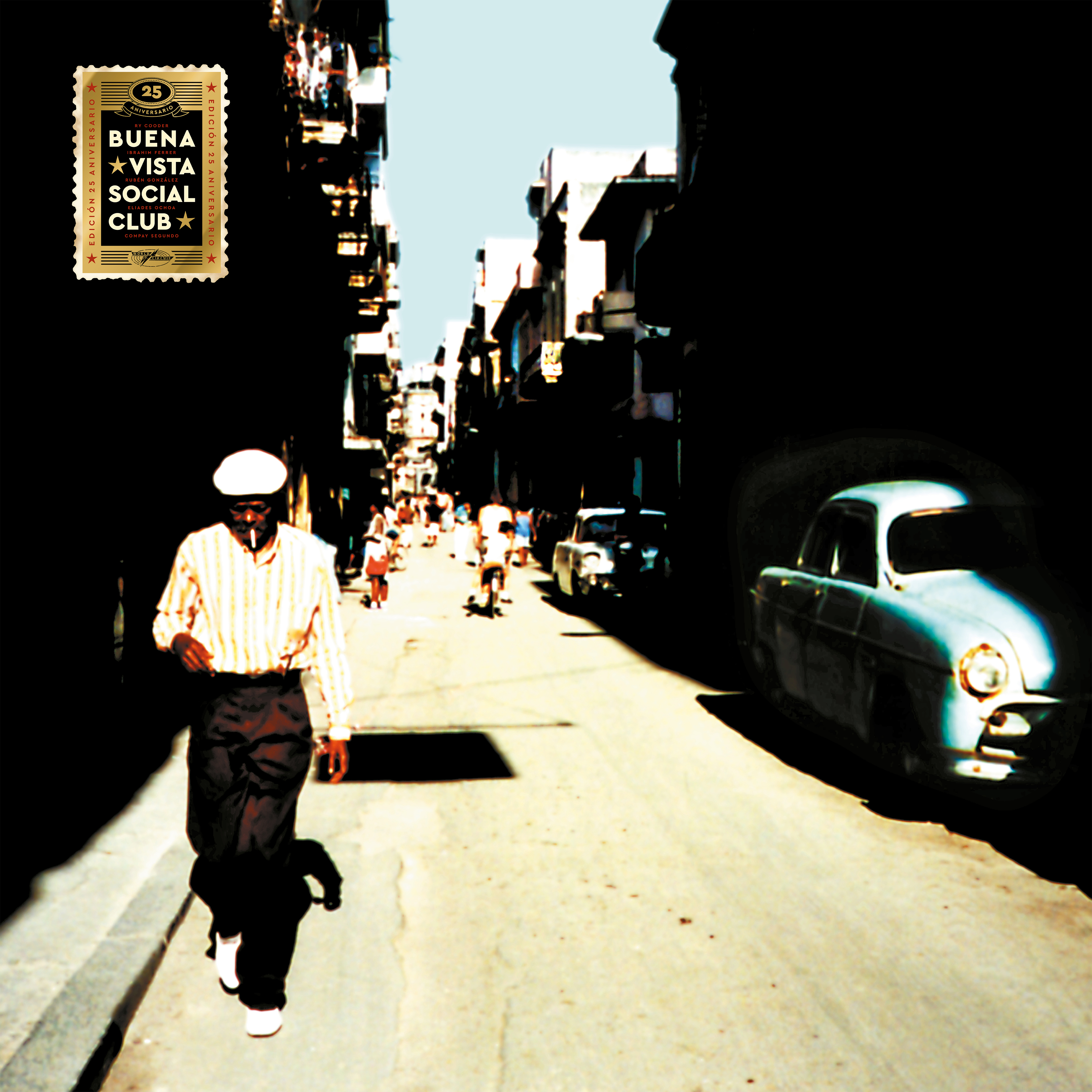Buena Vista Social Club
Biography
Buena Vista Social Club was a phenomenon. A one off, feel good sensation. And one that led to a web of subsequent spin-offs, that benefited from the original success, but took it in surprising new directions.
There are few examples where bad news turned so good as it did with Buena Vista. The original plan in March 1996 was to record an album featuring Cuban and Malian musicians. But the Malians, Djelimadi Tounkara and Bassekou Kouyaté, failed to get their visas in time. With the studio time booked, producers Ry Cooder, Nick Gold and Juan de Marcos González had to improvise.
The original plan had been to record not one but two albums. The first was Juan de Marcos’ celebration of the continuing vitality of Cuban music’s golden age, the 1940’s and 1950’s. He hand-picked a multi-generational big band which he called the Afro Cuban All Stars and in a week they had recorded their brilliant debut A Toda Cuba le Gusta (All Of Cuba Likes It). The following day, the recording of the second album was due to start. In haste, guitarist Ry Cooder was going to join some veteran musicians Juan de Marcos had managed to assemble in Cuba.
The rich, resonant voice of 89 year-old Compay Segundo provided a link with the island’s deepest musical past. “He knew the best songs and how to do them because he’d been doing it since World War One,” Ry Cooder noted. Female vocalist Omara Portuondo memorably joined him on ‘Veinte Años’. Singer Ibrahim Ferrer, who was scraping a living shining shoes and selling lottery tickets, was also rescued from obscurity. Guitarist and singer Eliades Ochoa brought energetic rural roots from Santiago de Cuba.
Veteran pianist Rubén González, who didn’t own a piano at the time, had been persuaded out of retirement by Juan de Marcos for the All Stars album. Not that it took much coaxing: despite his years of inactivity, his playing was on fire and so eager was he to get to the piano that every morning when the janitor turned up to unlock the studio doors, he was already waiting outside. Other musicians included bassist Orlando ‘Cachaíto’ López, trumpet player Manuel ‘Guajiro’ Mirabal, and Barbarito Torres the virtuoso laud player. Ry Cooder played guitars and his son Joachim percussion. In the space of two weeks the Havana recording blitz produced not only the Afro Cuban All Stars and the Buena Vista Social Club albums but also the debut solo album by Rubén González.
The run-down studios of the state recording company EGREM were also integral to the sound. Jerry Boys’ warm acoustic recordings are part of the magic.
“Buena Vista was a once-in-a-lifetime thing,” says Nick Gold. “We knew we’d made a special record but nobody could have imagined how it would take off.” Buena Vista went on to win a Grammy and its crossover appeal persuaded director Wim Wenders to make an award-winning 1999 documentary about the recordings.
The album’s success launched what can only be described as Cuba-mania, helping to inspire salsa dance classes and Cuban-themed bars. At its peak, it seemed that you couldn’t move without hearing Buena Vista’s potent, captivating soundtrack – particularly that opening track ‘Chan Chan’. Even Salman Rushdie, in his New York novel Fury, paid tribute to its all-pervasive power, describing the hot days of 1998 as “that Buena Vista summer”
On the album’s release, Nick Gold hoped that, given a fair wind, Buena Vista might sell 100,000 copies – a highly respectable figure in the world music field. Today the album’s sales stand at over eight million, making it the biggest-selling Cuban album in history. As one critic put it, Buena Vista has become “world music’s equivalent of The Dark Side of the Moon.”
“This is the best thing I was ever involved in,” Ry Cooder said prior to the album’s release in 1997. “It’s the peak, a music that takes care of you and nurtures you. I felt that I had trained all my life for this experience and it was a blessed thing.”
The original line up from the album made three triumphant concert appearances in Amsterdam and New York – filmed by Wim Wenders as the climax of his Buena Vista Social Club documentary. The live recording Buena Vista Social Club: At Carnegie Hall was released in 2008 and a collection of unreleased tracks called Buena Vista Social Club: Lost and Found was released in 2015. Buena Vista’s success also gave rise to a whole series of solo recordings with the individual artists – Ibrahim Ferrer and Ruben Gonzalez both enjoyed a late flowering new lease of life.
BIOGRAPHY
Buena Vista Social Club was a phenomenon. A one off, feel good sensation. And one that led to a web of subsequent spin-offs, that benefited from the original success, but took it in surprising new directions.
There are few examples where bad news turned so good as it did with Buena Vista. The original plan in March 1996 was to record an album featuring Cuban and Malian musicians. But the Malians, Djelimadi Tounkara and Bassekou Kouyaté, failed to get their visas in time. With the studio time booked, producers Ry Cooder, Nick Gold and Juan de Marcos González had to improvise.
The original plan had been to record not one but two albums. The first was Juan de Marcos’ celebration of the continuing vitality of Cuban music’s golden age, the 1940’s and 1950’s. He hand-picked a multi-generational big band which he called the Afro Cuban All Stars and in a week they had recorded their brilliant debut A Toda Cuba le Gusta (All Of Cuba Likes It). The following day, the recording of the second album was due to start. In haste, guitarist Ry Cooder was going to join some veteran musicians Juan de Marcos had managed to assemble in Cuba.
The rich, resonant voice of 89 year-old Compay Segundo provided a link with the island’s deepest musical past. “He knew the best songs and how to do them because he’d been doing it since World War One,” Ry Cooder noted. Female vocalist Omara Portuondo memorably joined him on ‘Veinte Años’. Singer Ibrahim Ferrer, who was scraping a living shining shoes and selling lottery tickets, was also rescued from obscurity. Guitarist and singer Eliades Ochoa brought energetic rural roots from Santiago de Cuba.
Veteran pianist Rubén González, who didn’t own a piano at the time, had been persuaded out of retirement by Juan de Marcos for the All Stars album. Not that it took much coaxing: despite his years of inactivity, his playing was on fire and so eager was he to get to the piano that every morning when the janitor turned up to unlock the studio doors, he was already waiting outside. Other musicians included bassist Orlando ‘Cachaíto’ López, trumpet player Manuel ‘Guajiro’ Mirabal, and Barbarito Torres the virtuoso laud player. Ry Cooder played guitars and his son Joachim percussion. In the space of two weeks the Havana recording blitz produced not only the Afro Cuban All Stars and the Buena Vista Social Club albums but also the debut solo album by Rubén González.
The run-down studios of the state recording company EGREM were also integral to the sound. Jerry Boys’ warm acoustic recordings are part of the magic.
“Buena Vista was a once-in-a-lifetime thing,” says Nick Gold. “We knew we’d made a special record but nobody could have imagined how it would take off.” Buena Vista went on to win a Grammy and its crossover appeal persuaded director Wim Wenders to make an award-winning 1999 documentary about the recordings.
The album’s success launched what can only be described as Cuba-mania, helping to inspire salsa dance classes and Cuban-themed bars. At its peak, it seemed that you couldn’t move without hearing Buena Vista’s potent, captivating soundtrack – particularly that opening track ‘Chan Chan’. Even Salman Rushdie, in his New York novel Fury, paid tribute to its all-pervasive power, describing the hot days of 1998 as “that Buena Vista summer”
On the album’s release, Nick Gold hoped that, given a fair wind, Buena Vista might sell 100,000 copies – a highly respectable figure in the world music field. Today the album’s sales stand at over eight million, making it the biggest-selling Cuban album in history. As one critic put it, Buena Vista has become “world music’s equivalent of The Dark Side of the Moon.”
“This is the best thing I was ever involved in,” Ry Cooder said prior to the album’s release in 1997. “It’s the peak, a music that takes care of you and nurtures you. I felt that I had trained all my life for this experience and it was a blessed thing.”
The original line up from the album made three triumphant concert appearances in Amsterdam and New York – filmed by Wim Wenders as the climax of his Buena Vista Social Club documentary. The live recording Buena Vista Social Club: At Carnegie Hall was released in 2008 and a collection of unreleased tracks called Buena Vista Social Club: Lost and Found was released in 2015. Buena Vista’s success also gave rise to a whole series of solo recordings with the individual artists – Ibrahim Ferrer and Ruben Gonzalez both enjoyed a late flowering new lease of life.




